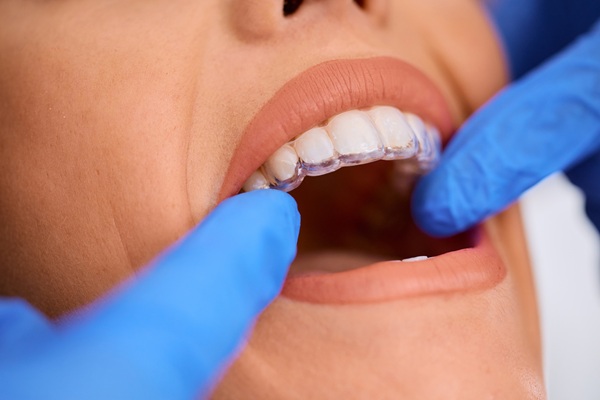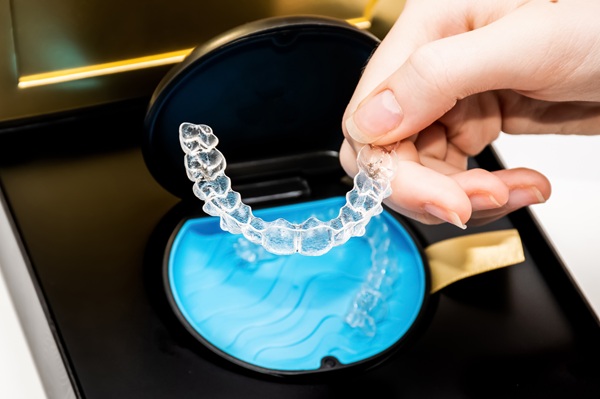One of the popular orthodontic solutions nowadays is the Invisalign, and they are especially known toward adults and teens who want a discreet way to straighten their teeth without the traditional metal braces. It works using a series of custom-made clear aligners that gently move your teeth over time.
One of the biggest benefits of Invisalign is that it’s generally more comfortable and less noticeable than metal braces, because they are made with medical-grade, BPA-free thermoplastic material.
However, like any orthodontic treatment, Invisalign may cause some temporary discomfort, especially when switching to a new set of aligners. While the discomfort is usually mild and manageable, it’s still helpful to know what to expect and how to ease it.
If you’re considering getting Invisalign or already have them, read this article first to give you a glimpse on how to manage discomfort during your Invisalign treatment.
Why Does Invisalign Cause Discomfort?
Discomfort during Invisalign treatment is typically caused by the pressure that these trays give to your teeth and gums. Each new aligner tray is slightly different from the last, which is designed to shift your teeth a small step closer to their ideal position. To do this, the aligners apply gentle, controlled force to certain teeth, hence, the discomfort.
However, that force is a good sign, it means your aligners are working, but it can also make your teeth feel sore, especially in the first few days of wearing a new tray. You might also experience:
- Tenderness or pressure on the teeth being moved
- Mild jaw soreness, especially if you clench your teeth at night
- Irritation to your gums, lips, or tongue if the edges of the aligners are slightly rough
- Headaches or discomfort when biting or chewing, particularly with the first aligners
Although the discomfort can be annoying, these experiences are temporary and usually ease within a few days. If the discomfort is ongoing or becomes painful, it’s important to speak to your Invisalign provider to give you more guidance on how to alleviate what you’re experiencing.
Read More: Maintaining Your Invisalign Aligners
Ways to Manage Invisalign Discomfort
There are various ways to reduce Invisalign discomfort and make your treatment journey smoother. Here are some helpful strategies we typically suggest to our patients:
1. Apply a Cold Compress
A cold compress or ice pack applied to your cheek can help reduce soreness and inflammation. Cold helps numb the area and can make the first few days with new aligners more comfortable. Do this by wrapping the ice pack in a cloth and apply it for 10–15 minutes at a time, a few times a day.
2. Use Over-the-Counter Pain Relief
If your teeth feel particularly sore, you can take mild pain relief such as paracetamol or ibuprofen. These medications reduce both pain and swelling. Always follow the dosage instructions on the label and check with your doctor or dentist if you’re unsure.
3. Wear Your Aligners as Directed
It might be tempting to take your aligners out when they are uncomfortable, but this can actually make things worse. Removing them slows your progress and can prolong the discomfort. For best results, wear your aligners for 20 to 22 hours a day, only removing them for eating, drinking and brushing.
The more consistently you wear them, the faster your teeth will adjust, and the less discomfort you will feel over time.
4. Switch to New Aligners at Night
Changing to a new aligner before bed gives your mouth time to adjust while you sleep. You will sleep through the most sensitive part of the adjustment period, and by morning, much of the initial pressure will have already eased.
5. Eat Soft Foods During the First Few Days
Chewing hard or crunchy foods can increase sensitivity during the adjustment phase. Try to stick to softer meals such as:
- Mashed potatoes
- Yoghurt
- Scrambled eggs
- Pasta
- Soup
- Smoothies
Avoid biting into hard fruits or vegetables, chewy bread, or nuts until your teeth feel more comfortable.
6. Use Orthodontic Wax for Sharp Edges
Sometimes, the edges of your aligners may irritate your gums, cheeks or tongue, which may cause gum boils or dental abscesses. To make sure you avoid this, you can apply a small amount of orthodontic wax to the problem area by rolling a small piece between your fingers and pressing it onto the edge.
This creates a smooth surface that protects your soft tissues. You can buy orthodontic wax at most pharmacies or ask your Invisalign provider for some.
7. Try Aligner Chewies
Aligner chewies are small, squishy cylinders that you gently bite on for a few minutes after inserting your trays. They help “seat” the aligners more snugly on your teeth and can reduce pressure points and discomfort.
Using chewies consistently may also help your aligners work more effectively, keeping your treatment on track.
8. Rinse with Warm Salt Water
If your gums are sore or irritated, rinse your mouth with warm salt water (half a teaspoon of salt in one cup of warm water). This helps soothe soft tissues and reduces inflammation. Rinse gently two to three times a day until the irritation settles.
Discomfort Is Temporary, But Your Smile Is Forever
It’s completely normal to feel some discomfort during Invisalign treatment, especially when starting a new set of aligners. But remember—this small, temporary soreness means your teeth are moving in the right direction. With a few ways to help you feel relieved, most people find the discomfort manageable and short-lived.
If you want to learn more about them or have been considering getting it, our dentists at Bellevue Hill Dental are here to guide and support you in your Invisalign journey. Schedule an appointment with us today to see if you’re a good candidate for the treatment.



